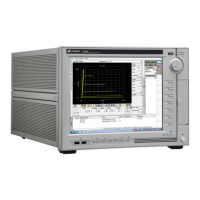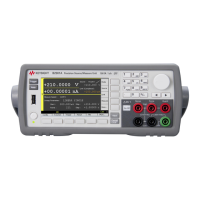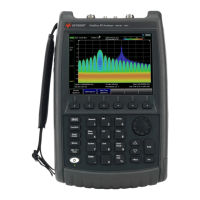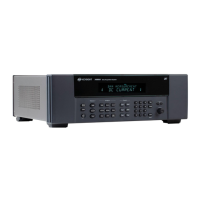58
Step 5. Set the test parameters shown in figure 3-13 to an appropriate one depend-
ing on your B1505A configuration and your test device.
The important check points are;
a. Collector SMU setup
b. Set Vc sweep parameters
c. Set the collector voltage to extract Iceo: Vc@Iceo,
Set the collector current to detect and measure BVceo: Ic@BVceo
Note: The maximum current of HVSMU is 8 mA in 1500V range, and it is
less than the 50 mA specification current to test Bce(sus) or
BVceo.
d. Set collector resister. Set "0 Ω" in the first trial.
Note: If 100 k
Ω
is used, we need to change the cable connection inside
the n1259A Test Fixture and Extended Setup parameters, too.
e. Set Integration time: IntegTime.
Note: For measuring breakdown voltage Vce(sus) or BVceo, short integra-
tion would be better for finishing measurement faster on break-
down condition, but longer integration time would be better for
measuring the leakage current Iceo in precise. The example uses
MEDEUM Integration time.
f. Set Hold and Delay Time:
Proper Hold Time and Delay Time in Extended Setup is effective for leak-
age current test especially if the collector start voltage is close to the
Vc@Iceo value as the case like the example setup.
Step 6. Make sure the device is properly selected as shown in the "Device used in
the example" part or your selection.
Close the lid of N1259A test fixture.
Start the measurement. (Click the Single button )
Note:
"Collector R is zero ohm!" message window pops up. Make sure the
HVSMU output is directly connected to the collector terminal, and press
the OK button to continue the test.
Note: In case a 100 k
Ω
resistor is inserted between the HVSMU and the col-
lector terminal:
There is no hazard at this moment because the measurement is not yet
started, but make sure the red High Voltage light on the B1505A front
panel and the Shock Hazard warning light of the N1259A Test Fixture is
not lit.
After assuring no high voltage is output from the B1505A, then reconnect
the cable and close the N1259A fixture cover. Press the OK button to con-
tinue the test.
Step 7. The graph window pops up, and the measurement starts.
Step 8. You can see the Ic-Vceo_R graph in figure 3-14.

